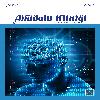Maksillofasiyal cerrahiden sonra gelişen postoperatif bulantı kusma için risk faktörleri
Anestezi, oral cerrahi, postoperatif komplikasyonlar, postoperatif mide bulantısı ve kusma
Risk factors for postoperative nausea and vomiting following maxillofacial surgery
___
- Dobbeleir M, De Coster J, Coucke W, et al. Postoperative nausea and vomiting after oral and maxillofacial surgery: a prospective study. Int J Oral Maxillofac Surg. 2018;47(6):721-5.
- Stadler M, Bardiau F, Seidel L, et al. Difference in Risk Factors for Postoperative Nausea and Vomiting. Anesthesiology. 2003;98(1):46-52.
- Shaikh SI, Nagarekha D, Hegade G, et al. Postoperative nausea and vomiting: A simple yet complex problem. Anesth Essays Res. 2016;10(3):388-96.
- Albuquerque AFM, Queiroz SIML, Germano AR, et al. Factors associated to post-operative nausea and vomiting following oral and maxillofacial surgery: a prospective study. Oral Maxillofac Surg. 2017;21(1):49-54.
- Silva AC, O’Ryan F, Poor DB. Postoperative nausea and vomiting (PONV) after orthognathic surgery: a retrospective study and literature review. J Oral Maxillofac Surg. 2006;64(9):1385-97.
- Carrol NV, Miederhoff P, Cox FM, et al. Postoperative nausea and vomiting after discharge from outpatient surgery centers. Anesth Analg. 1995; 80(5):903-9.
- Novosad S, Khan S, Bruce W, et al. Role of Obesity in Asthma Control, the Obesity-Asthma Phenotype. J Allergy. 2013;2013:538-642.
- Perrott DH, Yuen JP, Andresen RV, et al. Office-based ambulatory anesthesia: outcomes of clinical practice of oral and maxillofacial surgeons. J Oral Maxillofac Surg. 2003;61(9):983-95.
- Gan TJ. Risk factors for postoperative nausea and vomiting. Anesth Analg. 2006;102(6):1884-98.
- Phillips C, Brookes CD, Rich J, et al. Postoperative nausea and vomiting following orthognathic surgery. Int J Oral Maxillofac Surg. 2015;44(6):745-51.
- Jin Z, Gan TJ, Bergese SD. Prevention and Treatment of Postoperative Nausea and Vomiting (PONV): A Review of Current Recommendations and Emerging Therapies. Ther Clin Risk Manag. 2020;31(16):1305-17.
- Echeverria-Villalobos M, Fiorda-Diaz J, Uribe A, et al. Postoperative Nausea and Vomiting in Female Patients Undergoing Breast and Gynecological Surgery: A Narrative Review of Risk Factors and Prophylaxis. Front Med. 2022;1(9):909-82.
- Sinclair DR, Chung F, Mezei G. Can postoperative nausea and vomiting be predicted. Anesthesiology. 1999;91(1):109–18.
- Gan TJ, Belani KG, Bergese S, et al. Fourth Consensus Guidelines for the Management of Postoperative Nausea and Vomiting. Anesth Analg. 2020;131(2):411-48.
- Gan TJ, Diemunsch P, Habib AS, et al. Consensus guidelines for the management of postoperative nausea and vomiting. Anesth Analg. 2014;118(1):85-113.
- Cohen MM, Duncan PG, DeBoer DP, et al: The postoperative interview: Assessing risk factors for nausea and vomiting. Anesth Analg. 1994;78(1):7-16.
- Apfel CC, Greim CA, Haubitz I, et al. A risk score to predict the probability of postoperative vomiting in adults. Acta Anaesthesiol Scand. 1998;42(5):495–501.
- Apfel CC, Greim CA, Haubitz I, et al. The discriminating power of a risk score for postoperative vomiting in adults undergoing various types of surgery. Acta Anaesthesiol Scand. 1998;42(5):502–9.
- Smith CA, Ruth-Sahd L. Reducing the Incidence of Postoperative Nausea and Vomiting Begins With Risk Screening: An Evaluation of the Evidence. Journal of PeriAnesth Nurs. 2016;31(2):158-71.
- Hasegawa H, Abe A, Hayashi H, et al. Risk factors for postoperative nausea and vomiting after the removal of impacted third molars: a cross-sectional study. BMC Oral Health. 2021;21(1):1-5.
- Bakri MH, Ismail EA, Ali MS, et al. Behavioral and emotional effects of repeated general anesthesia in young children. Saudi J Anaesth. 2015;9(2):161-6.
- Cheong Y, Kang SS, Kim M, et al. Submental Intubation in Patients with Complex Maxillofacial Injuries. J Lifestyle Med. 2016;6(2):68-71.
- Alexander M, Krishnan B, Yuvraj V. Prophylactic antiemetics in oral and maxillofacial surgery: a requiem? J Oral Maxillofac Surg. 2009;67(9):1873-7.
- Tramèr MR. A rational approach to the control of postoperative nausea and vomiting: Evidence from systematic reviews: Part II. Recommendations for prevention and treatment, and research agenda. Acta Anaesthesiol Scand. 2001;45(1):14 –9.
- Andersen R, Krohg K. Pain as a major cause of postoperative nausea. Can Anaesth Soc J. 1976;23(4):366-9.
- ISSN: 2149-5254
- Yayın Aralığı: Yılda 3 Sayı
- Başlangıç: 1933
- Yayıncı: Hayat Sağlık ve Sosyal Hizmetler Vakfı
Rıza Gökçer TULACI, Hasan ÇANAKCI
Çocukluk çağında levotiroksin zehirlenmesi – gerçekten korkmalı mıyız?
Betül ÖZTÜRK, İlknur BODUR, Aysun TEKELİ, Ali GÜNGÖR, Raziye Merve YARADILMIŞ, Muhammed Mustafa GÜNEYLİOĞLU, Aytaç GÖKTUĞ, Nilden TUYGUN, Can Demir KARACAN
Muhammed ATAK, Şeyma HALAÇ, İrem SALDUZ
Pediatrik orta kraniyal fossa araknoid kistlerde uygulanan şant cerrahisinin etkinliği
Sabiha BEZGİN, Kamile UZUN AKKAYA, Bülent ELBASAN
Begum Busra CEVVAL OZKOCAK, Merve AĞACCIOĞLU, Fatma AYTAÇ BAL
Mehmet CANLEBLEBİCİ, Canan DEMİRCİ
Otomozal dominant polikistik böbrek hastalığında tolvaptan kullanımı: Tek merkez deneyimi
Cebrail KARACA, Mevlut Tamer DİNCER
Nebulize magnezyum sülfatın çocuklarda astım atakları üzerine etkisi
Mehmet ASLAN, Hilal KARABAĞ ÇITLAK, Erdem TOPAL, Harika GÖZÜKARA BAĞ, Fatih KAPLAN
